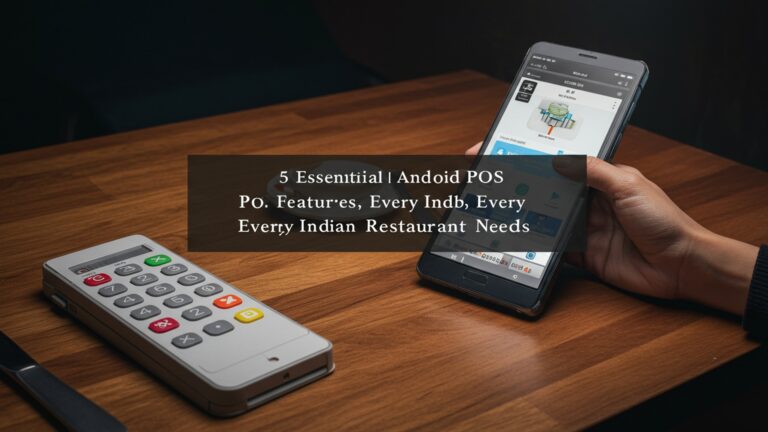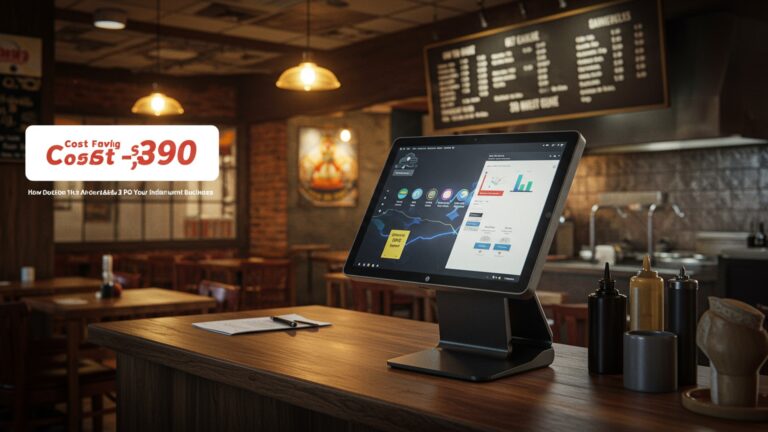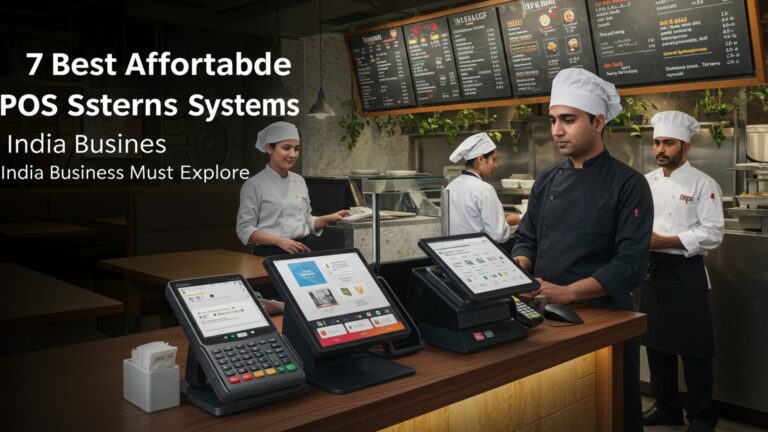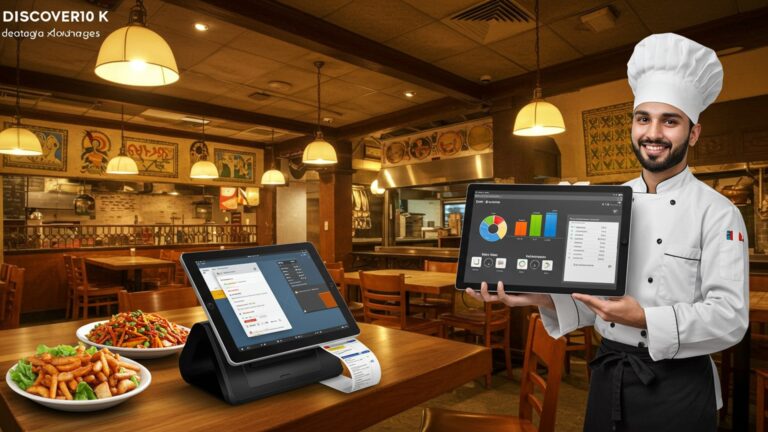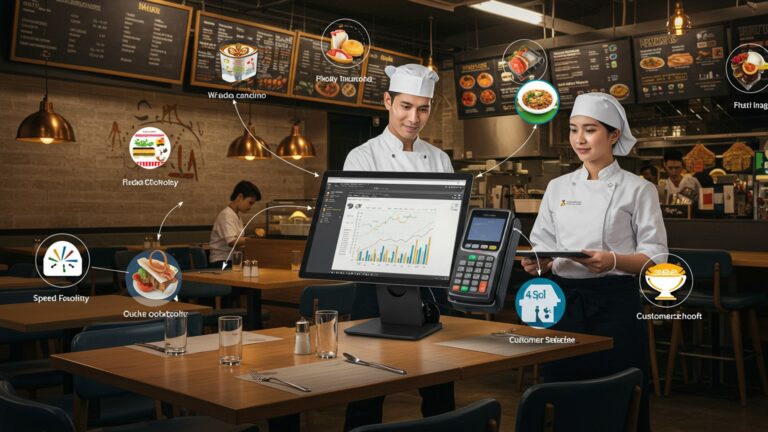Learn 8 Smart Inventory Control Strategies Using POS in India
In India’s dynamic retail landscape, effective inventory management is the bedrock of profitability, yet many businesses grapple with the complexities of dead stock, stockouts during peak seasons like Diwali. inefficient manual tracking. Modern Point-of-Sale (POS) systems are transforming this challenge, evolving beyond mere transaction processing into powerful hubs for strategic inventory control. With the rapid acceleration of digital adoption and UPI-led payments, leveraging an integrated POS for real-time inventory management across diverse Indian markets is no longer optional; it’s a competitive imperative. Smart POS utilization empowers businesses to achieve precise demand forecasting, optimize stock levels. minimize carrying costs, thereby unlocking significant operational efficiencies and enhancing customer satisfaction. This data-driven approach is critical for sustained growth in India’s fast-paced economy.
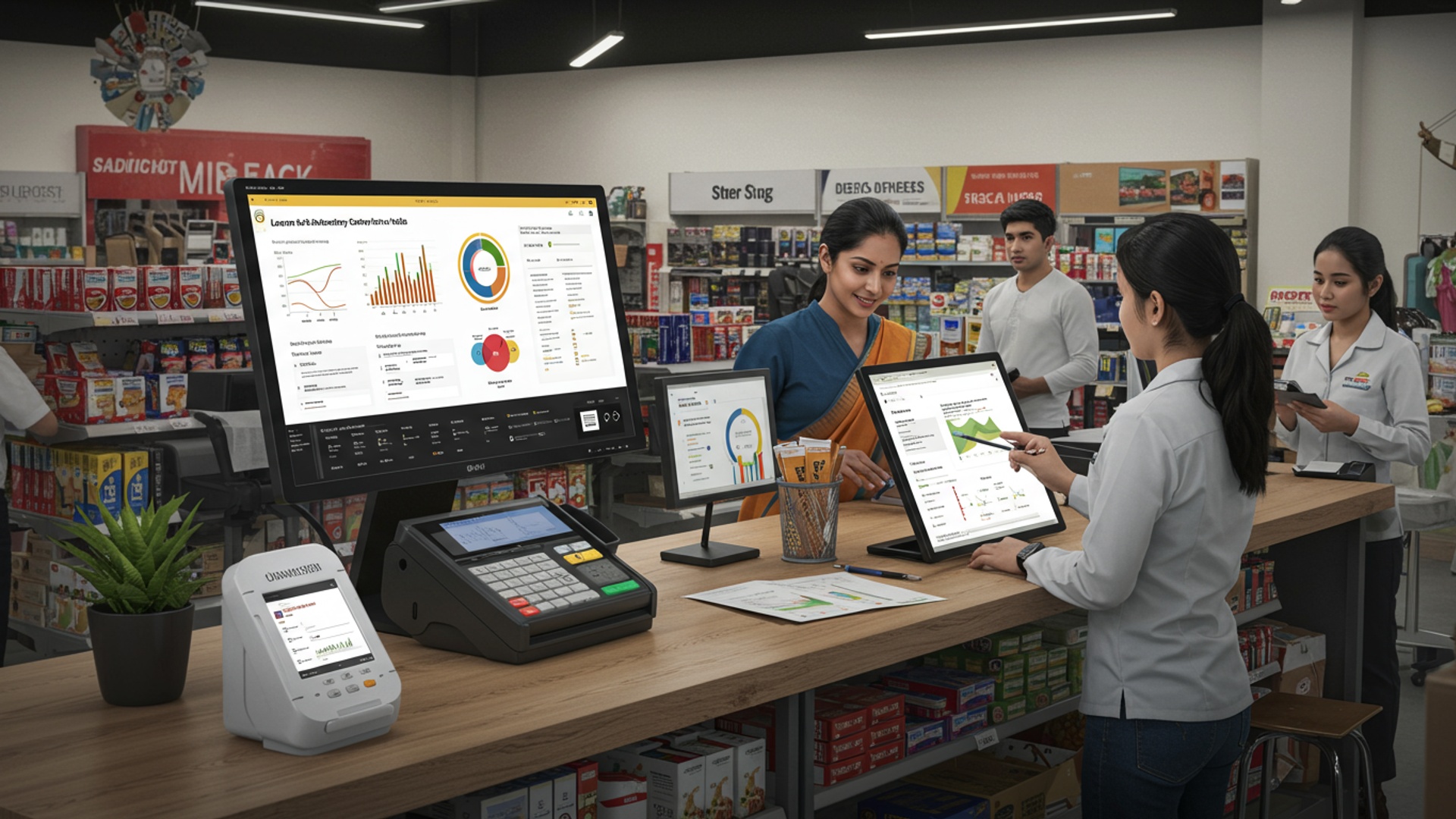
Understanding the Power of POS in Inventory Management
A Point of Sale (POS) system is more than just a cash register; it’s the central nervous system of modern retail and a cornerstone for effective inventory control. In India’s dynamic market, businesses ranging from small kirana stores to large retail chains are increasingly recognizing that robust Inventory management POS India solutions are critical for survival and growth. At its core, inventory control is about managing the flow of goods into and out of your business to meet customer demand while minimizing costs. A POS system transforms this complex task by digitizing and automating many processes that were once manual and prone to error. Before diving into specific strategies, let’s clarify some fundamental terms:
- Point of Sale (POS) System
- Inventory Control
- Inventory Management
- SKU (Stock Keeping Unit)
This is the hardware and software used to process customer transactions. Modern POS systems go far beyond transactions, integrating sales, inventory, customer management. reporting functionalities.
The process of managing a company’s stock to ensure that the right amount of goods is available at the right time, minimizing both overstocking and understocking.
A broader term encompassing inventory control. also including aspects like forecasting, purchasing, storage. valuation of inventory.
A unique identifier for each distinct product and service that can be purchased. Each variation (size, color, flavor) of a product typically has its own SKU.
The integration of these concepts through a POS system allows businesses in India to move from reactive stock management to proactive strategic planning, significantly impacting profitability and customer satisfaction.
1. Real-time Inventory Tracking and Visibility
One of the most transformative benefits of a modern POS system is its ability to provide real-time inventory tracking. Gone are the days of manual stock counts that were time-consuming and often inaccurate, leading to discrepancies between physical stock and recorded stock. With a POS system, every sale, return. new stock receipt is immediately updated in the inventory database.
Consider a bustling electronics store in Delhi. Historically, a customer asking for a specific model of smartphone might require a staff member to physically check the backroom or a separate spreadsheet. With a POS system, as soon as the barcode is scanned at the checkout, the system instantly decrements the stock count for that SKU. When a new shipment arrives, scanning items into the system updates the inventory levels in real time.
This real-time data flow offers immense benefits:
- Accurate Stock Levels
- Enhanced Customer Service
- Reduced Shrinkage
Businesses always know exactly what they have on hand, minimizing stockouts and overstocks. This is crucial for efficient Inventory management POS India operations.
Staff can quickly check product availability across different sizes, colors, or even store locations directly from the POS terminal, improving the customer experience.
By maintaining precise records, discrepancies become more apparent, helping to identify and address issues like theft or damage.
// Example of a POS system updating inventory after a sale
function processSale(itemSKU, quantitySold) { // Database call to fetch current stock let currentStock = getInventory(itemSKU); if (currentStock >= quantitySold) { // Update stock in real-time updateInventory(itemSKU, currentStock - quantitySold); console. log(`Sale successful for ${itemSKU}. New stock: ${currentStock - quantitySold}`); } else { console. log(`Error: Insufficient stock for ${itemSKU}. Available: ${currentStock}`); }
}
2. Automated Reorder Points and Alerts
Manually monitoring stock levels to decide when to reorder is a tedious and error-prone process. A smart POS system automates this by allowing businesses to set “reorder points” and “safety stock” levels for each SKU.
- Reorder Point
- Safety Stock
The minimum quantity of an item that triggers a reorder. When stock drops to this level, the system automatically suggests or generates a purchase order.
An extra quantity of an item held in inventory to reduce the risk of stockouts due to unexpected fluctuations in supply or demand.
A retail store in Mumbai, for instance, might set a reorder point of 10 units for a popular brand of instant coffee, with a safety stock of 5 units. When the stock level for that coffee drops to 10, the POS system can send an alert to the store manager or even automatically draft a purchase order to the supplier. This proactive approach ensures that shelves are always stocked with fast-moving items without tying up excessive capital in slow-moving inventory. This level of automation is a hallmark of advanced Inventory management POS India solutions.
3. Data-Driven Demand Forecasting with Sales History
One of the most powerful features of an integrated POS system is its ability to collect and assess sales data over time. This wealth of historical data is invaluable for accurate demand forecasting – predicting future customer demand.
A fashion boutique in Bangalore can use its POS data to identify seasonal trends, popular styles. peak sales periods. For example, by analyzing sales from previous Diwali seasons, the system can predict which ethnic wear items will be in high demand, allowing the boutique to stock up appropriately and avoid missed sales opportunities or leftover inventory.
Key data points for forecasting include:
- Sales Volume by Product/SKU
- Sales Trends (Weekly, Monthly, Seasonally)
- Promotional Impact
- Customer Purchase History
Identifies best-sellers and slow-movers.
Reveals patterns over time.
Helps grasp how discounts or marketing campaigns affect demand.
Can inform personalized stocking decisions.
By leveraging these insights, businesses can make more informed purchasing decisions, reducing the risk of overstocking unpopular items and understocking popular ones.
4. Optimizing Stock Levels for Profitability
Effective inventory control isn’t just about having enough stock; it’s about having the right amount of stock. Overstocking ties up capital, incurs storage costs. increases the risk of obsolescence or damage. Understocking leads to lost sales and dissatisfied customers. A POS system helps strike this delicate balance. Using the data gathered from sales history and reorder points, businesses can refine their stock-holding strategies. For example, a restaurant in Chennai using a POS can examine its daily ingredient usage. It might discover that a specific vegetable has a very short shelf life and high spoilage rate. By adjusting ordering quantities based on actual consumption patterns revealed by the POS, the restaurant can reduce waste and improve its bottom line. This optimization involves:
- Min/Max Levels
- Lead Time Consideration
- Inventory Turnover Rate
Setting minimum and maximum stock levels to guide purchasing.
Accounting for the time it takes for suppliers to deliver goods.
Monitoring how quickly inventory is sold and replaced, indicating efficiency.
| Strategy | Benefit of POS Integration | Risk Without POS |
|---|---|---|
| Minimizing Overstock | Reduced carrying costs, less capital tied up, lower spoilage. | High storage costs, increased risk of obsolescence, reduced cash flow. |
| Preventing Understock | Maximized sales, improved customer satisfaction, enhanced reputation. | Lost sales, customer dissatisfaction, potential damage to brand loyalty. |
5. Efficient Vendor Management and Purchase Order Generation
A comprehensive POS system streamlines the entire procurement process, from identifying the need for new stock to placing orders and receiving goods. When reorder points are triggered, the system can automatically generate purchase orders (POs) based on pre-set vendor details and desired quantities. Imagine a supermarket chain operating across multiple cities in India. Managing hundreds of vendors and thousands of SKUs manually would be a logistical nightmare. A centralized POS and Inventory management POS India system allows the head office or individual store managers to:
- Generate POs Automatically
- Track Vendor Performance
- Streamline Receiving
- Manage Returns to Vendor (RTV)
Based on sales data and reorder levels, significantly reducing manual effort and errors.
Monitor delivery times, pricing. product quality to identify the most reliable suppliers.
When goods arrive, they can be quickly scanned into the system, updating inventory levels and cross-referencing against the original PO.
Easily track damaged or incorrect items returned to suppliers.
This automation not only saves time but also fosters stronger relationships with suppliers through clear, consistent communication and efficient order placement.
6. Reducing Shrinkage and Pilferage
Shrinkage, the loss of inventory due to factors like theft, damage, or administrative errors, is a significant challenge for businesses globally, including in India. A robust POS system, combined with diligent operational practices, can be a powerful tool in minimizing these losses. How a POS system aids in reducing shrinkage:
- Detailed Transaction Logs
- Stock Audits and Variances
- Access Controls
- Barcode Scanning
Every sale, return, discount. void is recorded with timestamps and associated staff members, making it easier to identify suspicious activities.
By periodically conducting physical stock counts and comparing them against POS records, businesses can pinpoint discrepancies. Large variances can trigger investigations into potential theft or procedural breakdowns.
POS systems allow for user-specific permissions, limiting who can perform sensitive actions like inventory adjustments or voids, thereby reducing opportunities for internal theft.
Reduces human error in pricing and product identification, ensuring accurate inventory deductions.
A small apparel store in a busy market in Kolkata, which might have struggled with unexplained stock losses, found that implementing a POS system with detailed transaction tracking significantly reduced their shrinkage by making staff more accountable and identifying patterns of loss. This is a critical aspect of effective Inventory management POS India solutions.
7. Multi-Location Inventory Synchronization
For businesses with more than one store or a combination of brick-and-mortar and online sales channels, managing inventory across multiple locations can be incredibly complex. A cloud-based POS system offers synchronized inventory management, providing a unified view of stock levels across all touchpoints. Consider a popular bookstore chain with branches in Bangalore, Mumbai. Delhi. A customer looking for a specific, rare book might find it out of stock at their local branch. With a centralized POS, the staff can instantly check availability at other branches or the central warehouse and arrange for transfer or direct shipment. This ability to see and manage inventory across all locations:
- Prevents Lost Sales
- Optimizes Stock Distribution
- Supports Omnichannel Retail
If an item is out of stock in one store, it can be sourced from another, ensuring the sale is not lost.
Allows for strategic movement of slow-moving inventory from one store to another where demand is higher, preventing markdowns.
Seamlessly integrates online and offline inventory, enabling “buy online, pick up in store” (BOPIS) or “ship from store” models.
This holistic view of inventory is indispensable for scaling businesses and those operating in the competitive Indian retail landscape.
8. Leveraging Data-Driven Reporting and Analytics
Beyond merely tracking stock, a sophisticated POS system transforms raw inventory data into actionable insights through comprehensive reporting and analytics. These reports empower business owners and managers to make strategic decisions that impact profitability, efficiency. growth. Key reports and insights from a POS system for inventory management often include:
- Sales by Product/Category
- Inventory Turnover Rate
- Gross Margin Return on Investment (GMROI)
- Dead Stock Report
- Supplier Performance Reports
Identifies top-performing products and categories.
Measures how quickly inventory is sold and replaced, indicating efficiency. A high turnover rate is generally good for fresh products.
Helps evaluate the profitability of inventory.
Identifies items that haven’t sold in a long time, indicating potential write-offs or clearance sales.
Evaluates the reliability and cost-effectiveness of different vendors.
A small grocery store owner in Pune, initially relying on intuition, used their POS reports to discover that certain imported snacks had a very high profit margin but a slow turnover. By adjusting their ordering frequency and quantity for these items. promoting them more effectively, they significantly improved their overall profitability. This analytical capability is what truly elevates Inventory management POS India from a tactical necessity to a strategic advantage.
Conclusion
Mastering inventory control with a robust POS system is no longer a luxury but a strategic imperative for Indian businesses navigating today’s competitive landscape. By implementing the smart strategies discussed, from real-time tracking to proactive demand forecasting, you empower your operations to significantly reduce waste and prevent costly stockouts. My personal observation, especially after witnessing the digital transformation across various retail segments in India, is that consistent data entry and regular reconciliation are paramount. It’s not just about having the software; it’s about diligently using it to gain actionable insights. Embrace the power of your POS, perhaps exploring advanced features like integrating with e-commerce platforms for a unified stock view, a trend rapidly gaining traction. For instance, imagine a bustling electronics store in Delhi avoiding lost sales by accurately predicting festival season demand. By truly understanding and leveraging capabilities such as those detailed in these 7 Essential Inventory Management POS Tips for Indian Businesses, you’re not just managing stock; you’re actively shaping a more profitable and efficient future. Take these learnings, apply them with conviction. watch your business not just survive. truly thrive.
More Articles
How to Master Billing and POS Software for Efficient Retail Management
Learn How to Choose the Best POS Software for Your Grocery Store
How to Streamline Billing and POS Software for Efficient Sales and Inventory Management
Guide to 8 Top Restaurant POS Software Benefits for Indian Businesses
10 Reasons Why Android POS for Restaurants in India Boosts Efficiency
FAQs
What’s this all about – ‘8 Smart Inventory Control Strategies Using POS in India’?
This guide dives into eight effective methods for managing your stock more efficiently, specifically by leveraging Point-of-Sale (POS) systems, tailored for businesses operating in the Indian market. It’s designed to help you streamline operations and prevent common inventory headaches.
Why should Indian businesses use a POS system for inventory control?
Using a POS system in India offers numerous advantages like real-time sales tracking, automated stock updates, better demand forecasting. reduced manual errors. This leads to improved cash flow, minimized dead stock. a clearer picture of your business performance.
Can you give me a hint about the kinds of inventory strategies discussed?
Absolutely! The strategies cover a range of approaches, from setting reorder points and managing dead stock to optimizing space utilization, implementing ABC analysis. leveraging vendor management. They’re all aimed at making your inventory work smarter for you.
Who would benefit most from learning these strategies?
Anyone running a retail store, restaurant, or any business in India that deals with physical products and manages inventory will find these strategies highly beneficial. Whether you’re a small startup or an established enterprise, better inventory control means better business.
How can these strategies actually help my business?
By implementing these smart strategies, you can expect to see significant improvements like reduced inventory carrying costs, minimized stockouts and overstocking, enhanced customer satisfaction due to product availability. ultimately, increased profitability.
Is it hard to implement these inventory control methods using a POS?
Not at all! While there’s an initial learning curve with any new system, modern POS systems are designed to be user-friendly. The strategies themselves focus on practical application, making it easier to integrate them into your daily operations and see quick results.
Are these strategies useful for smaller businesses or just larger ones?
These strategies are incredibly valuable for businesses of all sizes, especially smaller ones in India. Effective inventory control is crucial for managing limited resources, preventing capital tie-up in unsold stock. ensuring a healthy bottom line, making them a must-know for growing ventures.

